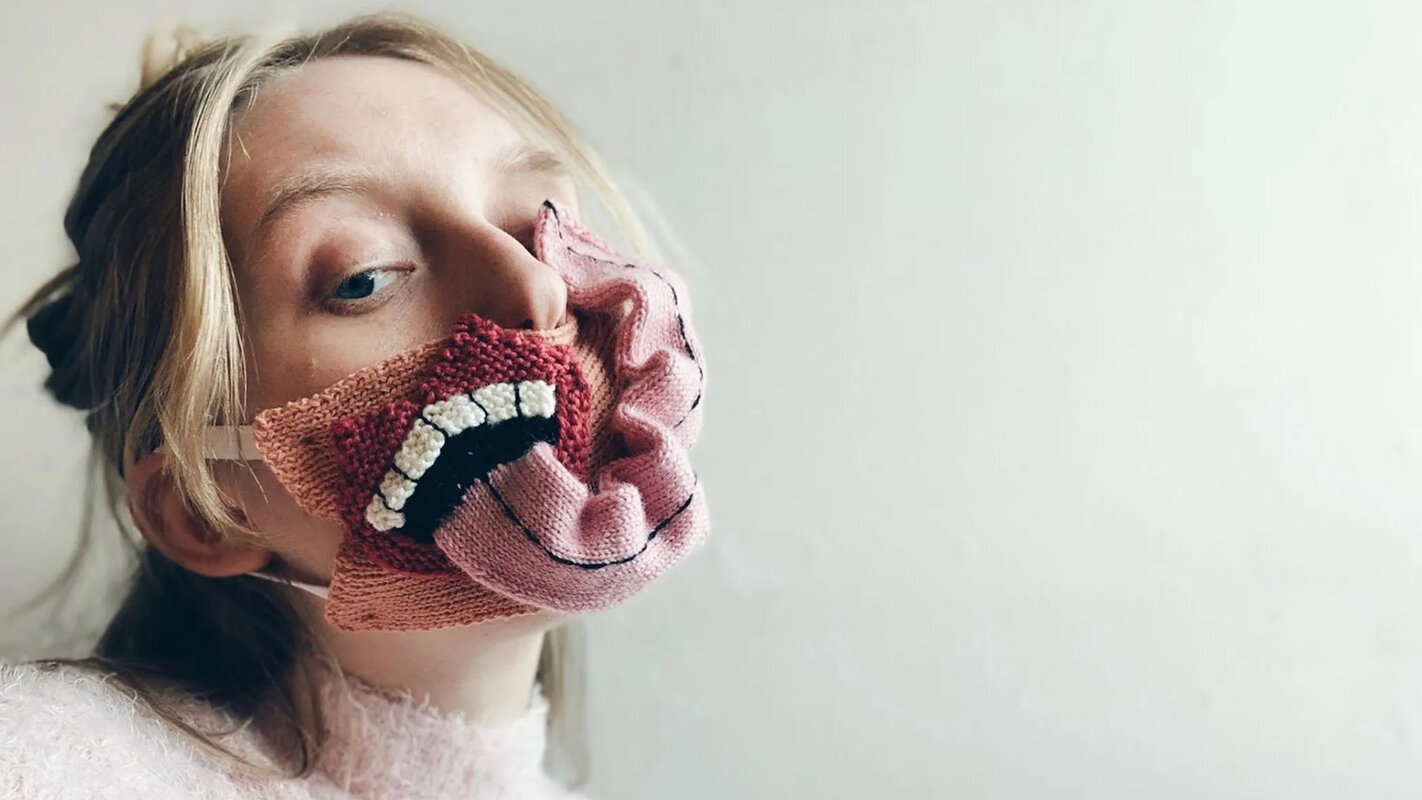
Ýrúrarí: Knitting With Tongues
Ýr Jóhannsdóttir is a textile designer and artist from Iceland working under the name Ýrúrarí. She knits with wool to create often wearable objects that express humour, body movements and everyday observation. Sustainability has become central to Ýrúrarí’s work, and she has incorporated unwanted clothing into her pieces, questioning the culture of rampant consumption and disposal fashion. Pieces by Ýrúrarí can be found in the collections of museums around the world, including the TextielMuseum in The Netherlands and the Museum of International Folk Art in New Mexico. She has also made wearable pieces for artists such as Erykah Badu, Tierra Whack, Sheidlina and various Icelandic musicians.
Pictoplasma: How did you get into working with textiles and what does it mean for you?
Ýrúrarí: I started knitting at school and graduated from Glasgow School of Art with a degree in textile design, but for several years, I have been mostly working with second-hand knits that I give a new life and character to. I do this by knitting and applying patches or doing embroidery. Clothing – as a medium – is fascinating. Most of us choose our clothes as a way of expressing ourselves. Of course, this is also influenced by fashion, the climate, our life, culture, class. When you're always around textiles, it makes you think about where they come from and end up, and it's really important to use them longer and draw out this cycle. As such, I've mostly used second-hand sweaters as my base material and add character to them. If you have this beautiful looking sweater, you're not going to throw it away, you're going to wear it if it has a story behind it.
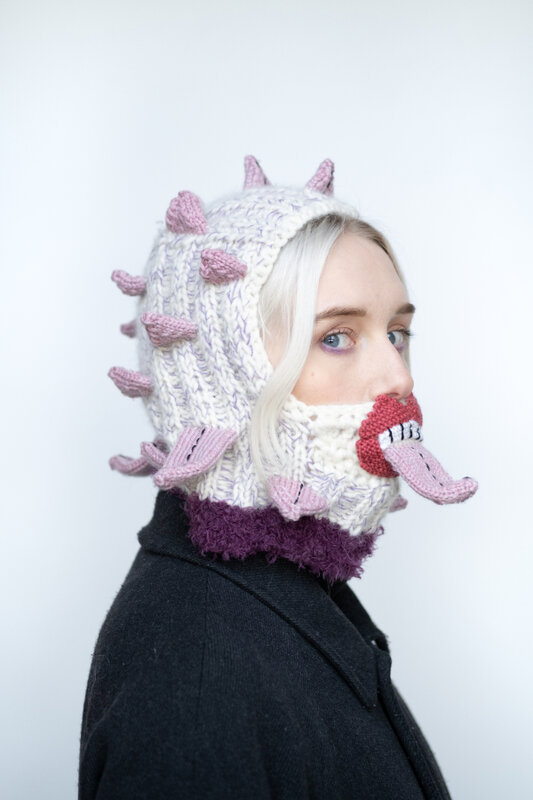
We discovered you in 2020 when you made a series of masks. Tell us about them!
The face masks are one of my latest projects. I made them in the early months of the pandemic. At that time, face masks became a new necessity and we all had to wear them. Today, the masks are just a fact of life, and most of us have maybe become a bit bored of them. But in the beginning, face masks were a new reality, and it inspired artists, designers and creators to work with the mask form. This was surely because the face loses half of its expression when you wear a face mask, and it's really important to visualize your feelings and communicate with your face. I made some masks that were supposed to cover up the nose and mouth, but they were not meant to be practical masks. Later on, I started adding tongues, and giving them that 3D dimension changed them a lot. The concept was that the masks were not safe in themselves, but they were a way of making people stay further away from you as we all internalised the rule of keeping at a distance. And then I just carried on experimenting. I was inspired by snakes and their split tongues, and it ended up getting a bit grotesque. The last mask I made was called The Mother Tongue. It's a tongue that has many small mouths and tongues growing out of it.
“There's this stereotype of the knitter who sits alone and is very passive inside, but the tongues are kind of rude and maybe a bit sexual or chatty”
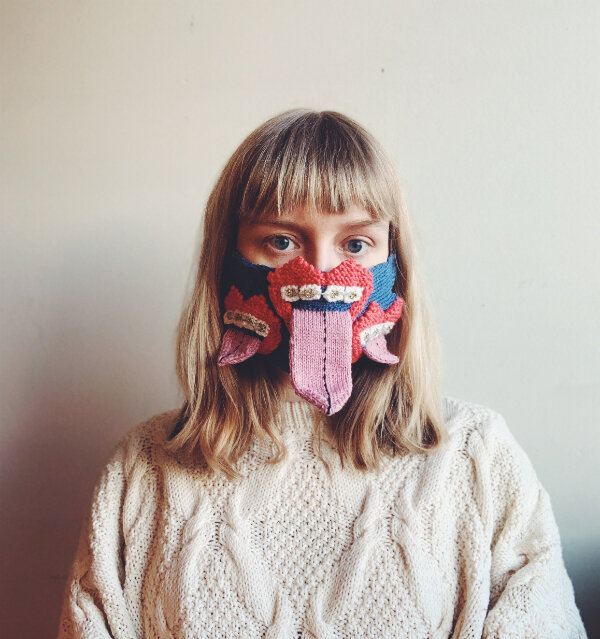
It wasn’t the first time that you’d explored faces and tongues.
The masks were also inspired by a sweater I’d made the year before. I call this sweater the Sketch Sweater. I am a textile designer, and I don't really sketch that much with pen and paper. I feel most comfortable just working with the yarn, so I changed this white second-hand sweater into my own sketchbook where I could try out some techniques before applying them to other sweaters. But this sweater just ended up really nice, and it's actually one of my favourite sweaters.
I've been playing around with adding these mouths and tongues to it. Some people interpret this as a comment on the way we consume clothes at such a fast pace, and now the sweater’s started consuming us, in a way. The mouth can be seen as greedy and monstrous and scary, but there's also humour and a light approach to serious matter.
I made the first tongue sweater for an upcycling design show. It was my first experiment with knitting on the tongues. I really like them, and they give a street element to the sweater. There's this stereotype of the knitter who sits alone and is very passive inside, but the tongues are kind of rude and maybe a bit sexual or chatty … the opposite of the passive knitter!
“I was quite stressed about giving out the rights to copy my creation, but it has been very rewarding.”
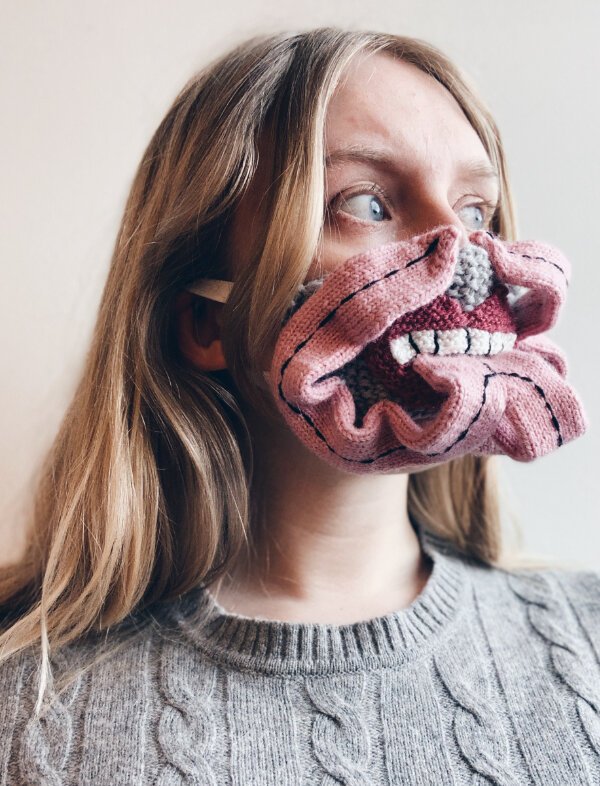
You seem to have a deep fascination with tongues!
I developed what I call the Sleik Sweater, because 'sleik' means 'kissing with tongues' in Icelandic, and you can see the tongues going into a knot. I've made some different variations of that sweater and it has become quite popular. People were constantly asking if they could order one, but the sweaters take quite a long time to make. Knitting and stitching just one tongue-mouth onto a sweater takes at least an hour – it’s time consuming, and it's also quite boring doing the same thing again and again. Therefore, instead of going into some kind of mass production, and because I didn't want to add new materials into my work, I came up with the idea of making the pattern and sharing it via the Sleik Zine. I sell the zine on my website, and people have been using the pattern a lot. It's very visual, and you don't have to be an experienced knitter to make the sweater. At first, I was quite stressed about giving out the rights to copy my creation, but it has been very rewarding seeing the outcomes. It's kind of like with handwriting or something, everyone has their own style.
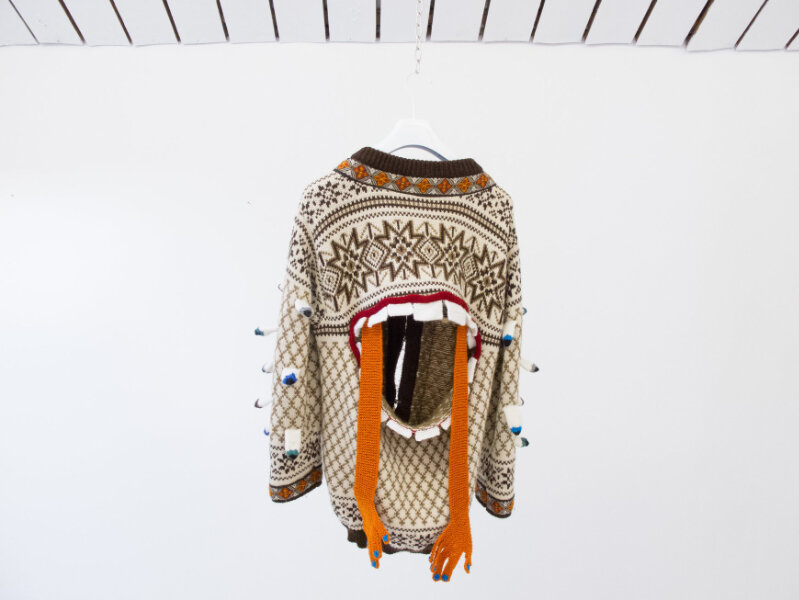
You recently returned to working on the human face and head with the balaclavas you made in collaboration with your friend Ása. This seems to complete the circle of masks, tongues and characters!
Ása is a knitter, and we had this idea that she could knit balaclavas out of some leftover yarn from my studio – I'm trying to empty out my studio before moving to Berlin! I then worked with the balaclavas and decorated them in my own way, bringing out new dimensions and giving them character. We call the collaboration Facing Winter, the name points to the difficulty of the cold and dark winters we get here in Iceland. Making these balaclavas was a way for me and Ása to face the winter by doing a fun knitting collaboration, and for the people who will wear the balaclavas and the people walking past them, it serves the same purpose. The point of the balaclavas is to bring out some smiles and joy amidst the dark every-day, and some of them even reference the sun and togetherness. Looking at this project now makes me realise it's exactly what I was also trying to accomplish with my face masks during the pandemic; using humour, characterization and wearable knits to lighten the mood.
Interview by Pictoplasma published in Pictoplasma Magazin – Issue 2: Character Care, 2022



